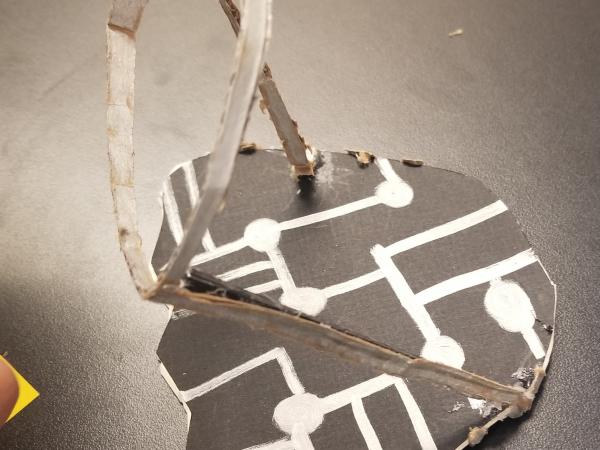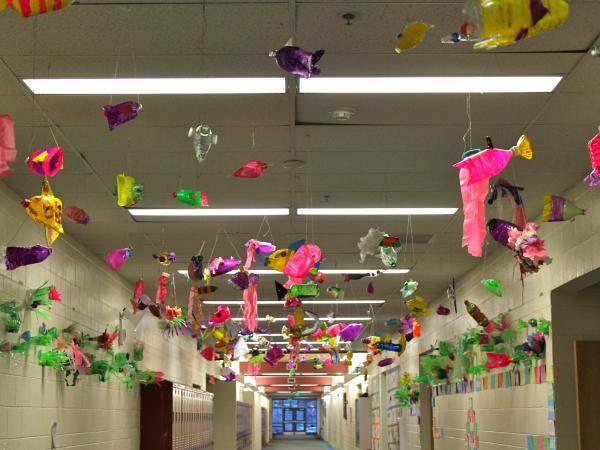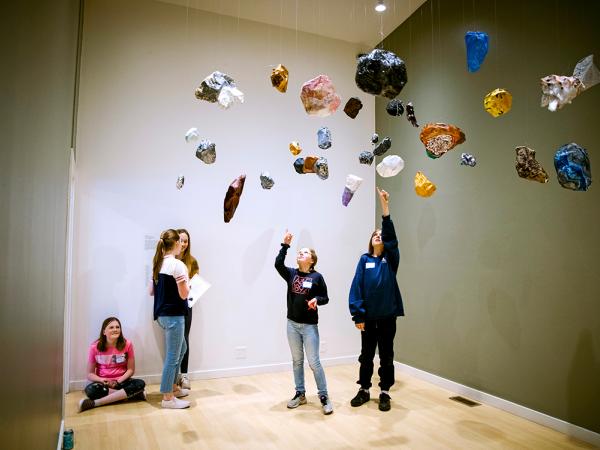Day 1 – Introduction
Introduce the project with a slide show
Questions to ask during the slide show include:
- What do you see?
- Why do you think the artists made particular the creative choices?
- How do you think the artist did that?
- How do you think math was used in this art?
- How are the artists similar? How are they different?
Review the art terms:
- Form
- Texture
- Color
- Space
- Sculpture
Discuss the artist statement/monologue
Review the project goals:
- Choose a rock and research identifying information about the rock
- Calculate the rock’s density
- Create a 3D sculpture based on the rock type chosen
- Present your work to our group, delivering a monologue that provides rock’s “story”
- Display your art at school and in the exhibition
Using paper and pencil, students should sketch ideas for their sculptures
Day 2 – Artmaking
Students will be given a demonstration for how to build using chicken wire and papier maché
Students will begin creating their sculptures
- Using chicken wire, students should create the form of their sculpture
- Once the structure is created, they should begin building the form of their sculpture using papier maché
- When creating their sculptures, students should remember the three art terms: form, color, and texture
At the end of class, students will store their projects with their names by them and let them dry overnight
Day 3 – Artmaking
Students will continue working on their rock sculptures, keeping in mind:
- Color scheme of the rock
- Texture of the rock
- Form of the rock
Students will finish building their sculptures with papier maché and begin adding color and texture
At the end of class, students should store their projects with their names by them
Day 4 – Artmaking
Students will finish their sculptures, keeping in mind:
Students should complete their sculptures and begin to write their monologues
- Students will talk about their artistic choices in the monologue
- They will use vocabulary words provided when sharing their rock’s story
- They should have their density calculated
At the end of class, students should store their projects and keep their calculations and monologues in a safe place
Day 5 – Presentations
Students will deliver their monologues and present their sculptures to the class. Students should talk about:
- Their rock’s “story”: What's the story of this place, my place, my origin?
- Who am I? Include rock’s age, type, and composition
Students will turn in their density form and a copy of their monologue




0 comments
Leave a Comment